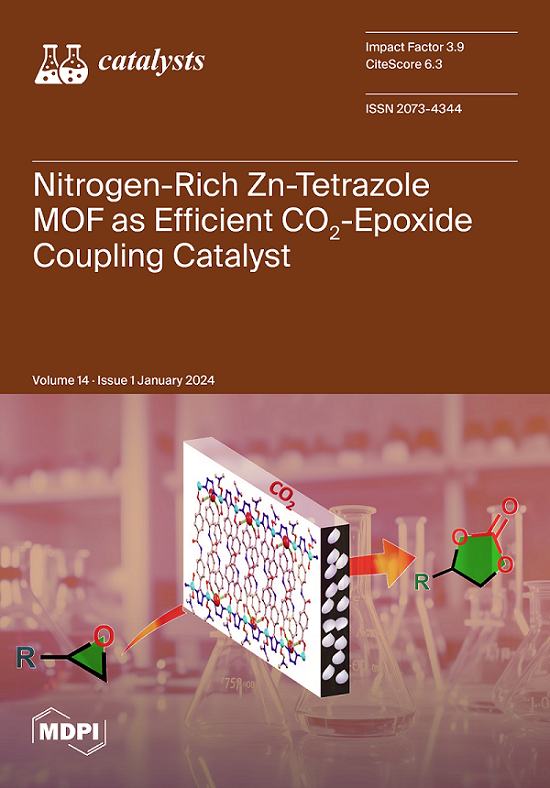Assessing the Efficacy of A Mo2C/Peroxydisulfate System for Tertiary Wastewater Treatment: A Study of Losartan Degradation, E. coli Inactivation, and Synergistic Effects
IF 3.8
3区 化学
Q2 CHEMISTRY, PHYSICAL
引用次数: 0
Abstract
This work examines the use of pristine Mo2C as an intriguing sodium persulfate (SPS) activator for the degradation of the drug losartan (LOS). Using 500 mg/L Mo2C and 250 mg/L SPS, 500 μg/L LOS was degraded in less than 45 min. LOS decomposition was enhanced in acidic pH, while the apparent kinetic constant decreased with higher LOS concentrations. According to experiments conducted in the presence of scavengers of reactive species, sulfate radicals, hydroxyl radicals, and singlet oxygen participated in LOS oxidation, with the latter being the predominant reactive species. The presence of competitors such as bicarbonate and organic matter reduced the observed efficiency in actual matrices, while, interestingly, the addition of chloride accelerated the degradation rate. The catalyst showed remarkable stability, with complete LOS removal being retained after five sequential experiments. The system was examined for simultaneous LOS decomposition and elimination of Escherichia coli. The presence of E. coli retarded LOS destruction, resulting in only 30% removal after 3 h, while the system was capable of reducing E. coli concentration by 1.23 log. However, in the presence of simulated solar irradiation, E. coli was reduced by almost 4 log and LOS was completely degraded in 45 min, revealing a significant synergistic effect of the solar/Mo2C/SPS system.Mo2C/过氧二硫酸盐体系处理三级废水的效果评价:氯沙坦降解、大肠杆菌灭活及其协同效应的研究
这项工作考察了原始Mo2C作为一种有趣的过硫酸钠(SPS)激活剂用于降解药物氯沙坦(LOS)的用途。使用500 mg/L Mo2C和250 mg/L SPS,500μg/L LOS在不到45min的时间内降解。在酸性pH下,LOS分解增强,而表观动力学常数随着LOS浓度的升高而降低。根据在活性物质清除剂存在下进行的实验,硫酸盐自由基、羟基自由基和单线态氧参与LOS氧化,后者是主要的活性物质。竞争对手如碳酸氢盐和有机物的存在降低了在实际基质中观察到的效率,而有趣的是,氯化物的加入加速了降解速率。该催化剂表现出显著的稳定性,经过五次连续实验后,LOS的完全去除得以保留。对该系统同时进行LOS分解和消除大肠杆菌的检测。大肠杆菌的存在延缓了LOS的破坏,导致3小时后仅去除30%,而该系统能够将大肠杆菌浓度降低1.23log。然而,在模拟太阳照射的情况下,大肠杆菌减少了近4log,LOS在45分钟内完全降解,这表明太阳能/Mo2C/SPS系统具有显著的协同效应。
本文章由计算机程序翻译,如有差异,请以英文原文为准。
求助全文
约1分钟内获得全文
求助全文
来源期刊

Catalysts
CHEMISTRY, PHYSICAL-
CiteScore
6.80
自引率
7.70%
发文量
1330
审稿时长
3 months
期刊介绍:
Catalysts (ISSN 2073-4344) is an international open access journal of catalysts and catalyzed reactions. Catalysts publishes reviews, regular research papers (articles) and short communications. Our aim is to encourage scientists to publish their experimental and theoretical results in as much detail as possible. Therefore, there is no restriction on the length of the papers. The full experimental details must be provided so that the results can be reproduced.
 求助内容:
求助内容: 应助结果提醒方式:
应助结果提醒方式:


